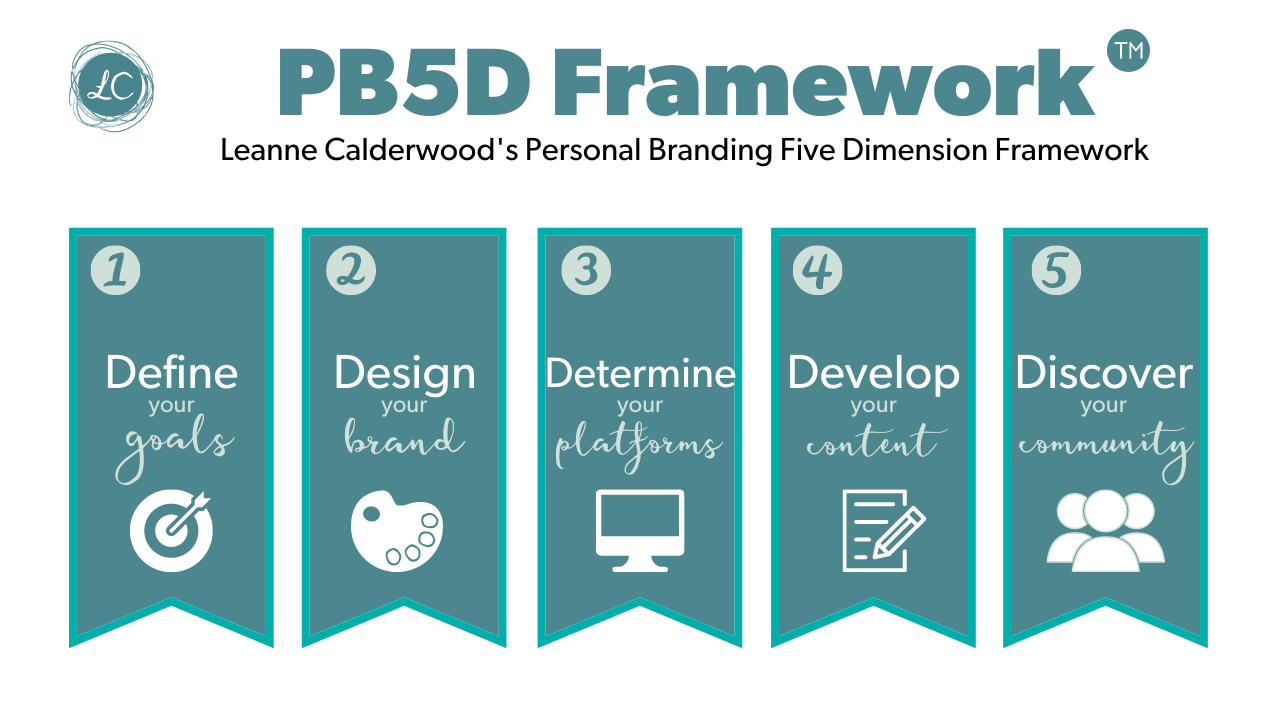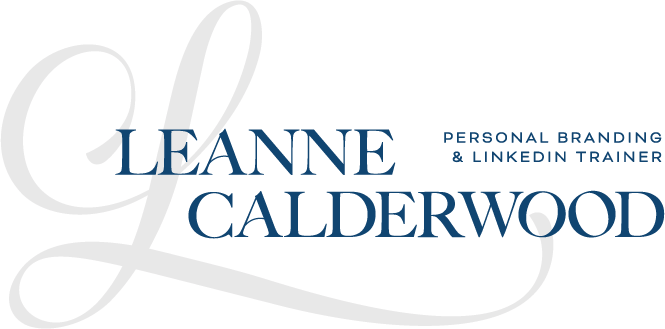It happens without fail. We’ll create compelling educational content for our social media platforms, spend…

5 Key Dimensions When Developing a Personal Brand for Sales Professionals
Personal branding need not be complex, yet many people find the notion of personal branding to be confusing. What is a personal brand? How does someone start a brand? What are things to consider when creating a brand?
While there are many facets of personal branding, especially when you represent a product/service or organization, all things personal branding for sales professionals can fall under one of five strategic pillars – I’ve outlined these 5 key dimensions when developing a personal brand in a framework titled the PB5D Framework (Personal Branding 5 D’s).
The 5 Key Dimensions When Developing A Personal Brand for Sales Professionals (The PB5D Framework)
Dimension #1 – Defining Your Goals – when creating a brand, it’s important to understand why you are creating a brand, and who you are creating it for. These questions can be asked as you work through this first pillar. Some examples of goals could be:
-
- to nurture a relationship
- to create a sale
- to attract opportunities
- to seek new job positions and roles
- to contribute to the industry
Your brand is also meant to attract an audience. Your goal may be to attract a small audience, or your goals may be to attract a large community. Either way, all that you do in your brand will speak to someone.
After defining your goals around why you are building a brand, you’ll want to focus on your intended audience. The group of individuals you have in mind to hear your message will also drive the decisions you make in the remaining four pillars.
There is a bit of an art to defining your target audience; you want to choose an audience that will benefit from your brand and content. You also, however, want to tailor your brand and content to speak to a very select individual.
Dimension #2 – Designing Your Brand – this is ironically not solely about colors, fonts, and the aesthetics of your brand, but rather this looks at all the aspects of your personality, and you decide what aspects to amplify on a professional level as part of your brand. Some things you may want to amplify include:
-
- Your personality characteristics
- Your passions
- Your strengths
- Your Talents
- Your beliefs
- Your skills
- Your values
- Your traits
Once you have a collection of characteristics built up, it’s time to decide which ones to AMPLIFY through your brand!
Choosing a select few characteristics allows you to FOCUS on those things when building your brand, and gives your audience a chance to identify those things with your brand.
By choosing too many, you’ll make it difficult for your target audience to get to know you and identify with you.
When you choose a few select characteristics, you’ll audience will start to know you and trust you based on what they believe about you as amplified through your brand.
Dimesion #3 – Determine Your Platforms – there are a plethora of ways of communicating your personal brand. The format in which you deliver your content is called a “platform”.
Those that build a personal brand do so using a platform or a combination of several different platforms. – it could be through social media, a written blog, video series, regular podcasts, newsletters, or a combination of these. Figuring out which platform(s) work best for you and for your audience are explored in this third pillar. Some platforms include:
-
- Social media, such as LinkedIn, Facebook, Twitter, Instagram, etc.
- WordPress or Medium blog
- YouTube channel
- Spotify podcast
- E-newsletter
Social Media – Having a presence on social media is a great platform to start with; this form of engagement is short-form, and you can build consistency rather quickly. Consider your personal style, as well as the social media channels that your target audience uses. While it may be tempting to try to be on all the different social media channels at once, choosing to engage on one platform at a time gives you the opportunity to build consistency and mastery on that platform.
Long-form content marketing offers more, in-depth information on a topic. Producing content on these platforms will take more time, but there are many benefits to long-form content
-
- more online sharability and visibility
- more authority created; you’ve now positioned yourself as a thought leader
- more opportunity to serve your audience
- more links to your product, service, or back to your content
- long-form content can be repurposed into multiple pieces of short-form content.
Some examples of long-form content platforms include:
-
- Blogging – there are a number of very user-friendly blog platforms on the market. WordPress and Medium are quite popular. Linkedin’s Article feature is also a great way to build brand awareness, which means you can use both short-form and long-form content on one platform.
- Videos – filming video as an extension of your personal brand is need not be onerous; a laptop webcam is all that is required to get started and film a piece of video. Your video can be posted on your social media, or use YouTube or Vimeo to grow a channel and attract an audience.
- Podcasts – there has been an explosion of growth in podcasts, and for great reason! They are easily consumed (many people consume podcasts will on-to-go and doing other tasks). If you have any hesitancy going on video, a podcast may be a great way to create long-form content with minimal tech.
In the same way that a social media presence requires consistency, so does the commitment to long-form content.
Dimension #4 – Develop Your Content – Once you have a semblance of a brand ready to be amplified, and a platform in which to communicate it, its time to create content for your audience. Content creation is generating written or visual information that will inform, engage, educate, or entertain your target audience. Flushing out your ideas and ways of connecting with your audience fall under this fourth pillar.
Content can take many forms, some forms include:
-
- short social media post
- long-form articles
- video posts
- audio content
- images
As we explored in pillar #3, creating consistent content will be key to growing your personal brand. Finding content that resonates with your target audience is what you’ll explore in pillar #4. There are a number of ways to determine what topics are a good fit for your content and your audience:
- Solving a pain point of your target audience
- Industry trends for your audience
- Time and money-saving tips
- Success stories and best practices
Dimension #5 – Discover Your Community – One of the main reasons for developing a personal brand is communicating to a group of people; your community. Finding your community and engaging with them is the reason for creating a brand, ensure you spend time in this fifth pillar as you build your brand. Making your community members feel like they are a part of your story and your journey will attract engagement, create more trust in your brand, and give you insights into their challenges and pain points. From there, you can continue to build on the content you’ve started to create in pillar #4.
You can engage with your community in a number of ways:
-
-
- engage with your community via social media
- send engaging emails
- direct messages
- direct mentions in posts
- networking (virtual and in-person)
-
As you weave together your personal branding strategy, taking time in each area will ensure you have a holistic view of our brand, its goals, and its impact on your community.
Want to get started with creating your Five Dimension Brand? Download this FREE workbook and start to consider all the possibilities with YOUR personal brand!
RELATED – The Importance Of Personal Branding in Sales
RELATED – The #1 Key to Personal Branding (hint: it’s not being on social media every day!!)
RELATED – Using Video to Create Engagement in the Meetings Industry



